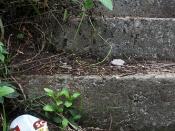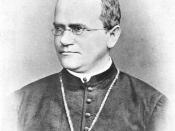There are very few scientists who have made posthumous contributions to science, but the Moravian monk Gregor Mendel is one of these scientists. Mendel became a monk in a monastery that was filled with monks as dedicated to science as to prayer. From the monks, Mendel learned about the latest advances in botany. Later, Mendel attended the University of Vienna where he learned more about biology, physics, and mathematics. Some of Mendel's teachers of physics showed Mendel how to test a hypothesis with experiments, something that few biologists were doing at the time. The mathematicians meanwhile taught Mendel how to use statistics to find order hidden in seemingly random collections of data. In 1853 Mendel returned to the monastery in Brno. It was at this time upon his return that he started working on his famous pea plant experiments testing whether it is possible that new species might be produced by hybridizing existing species.
It was these experiments that would eventually change how biologists viewed how all of life was passed on from generation to generation (Lecture 3/1).
To start his experiments Mendel identified seven characteristics that exist as a clear-cut pair of traits. In what has become a classic experiment, Mendel crossed two plants, one having round seeds and one having wrinkled seeds. After breeding these two plants, the first generation all had rounded seeds, but in a second later generation, there was a three to one ratio of rounded seeds over wrinkled seeds. What was new to science as introduced by Mendel was how he used this statistic to describe his conclusions. Also new to science was how he described these traits that were being shown. The round seed trait that the first generation plant had, the trait that persisted in every generation, Mendel called "dominant". The wrinkled...


